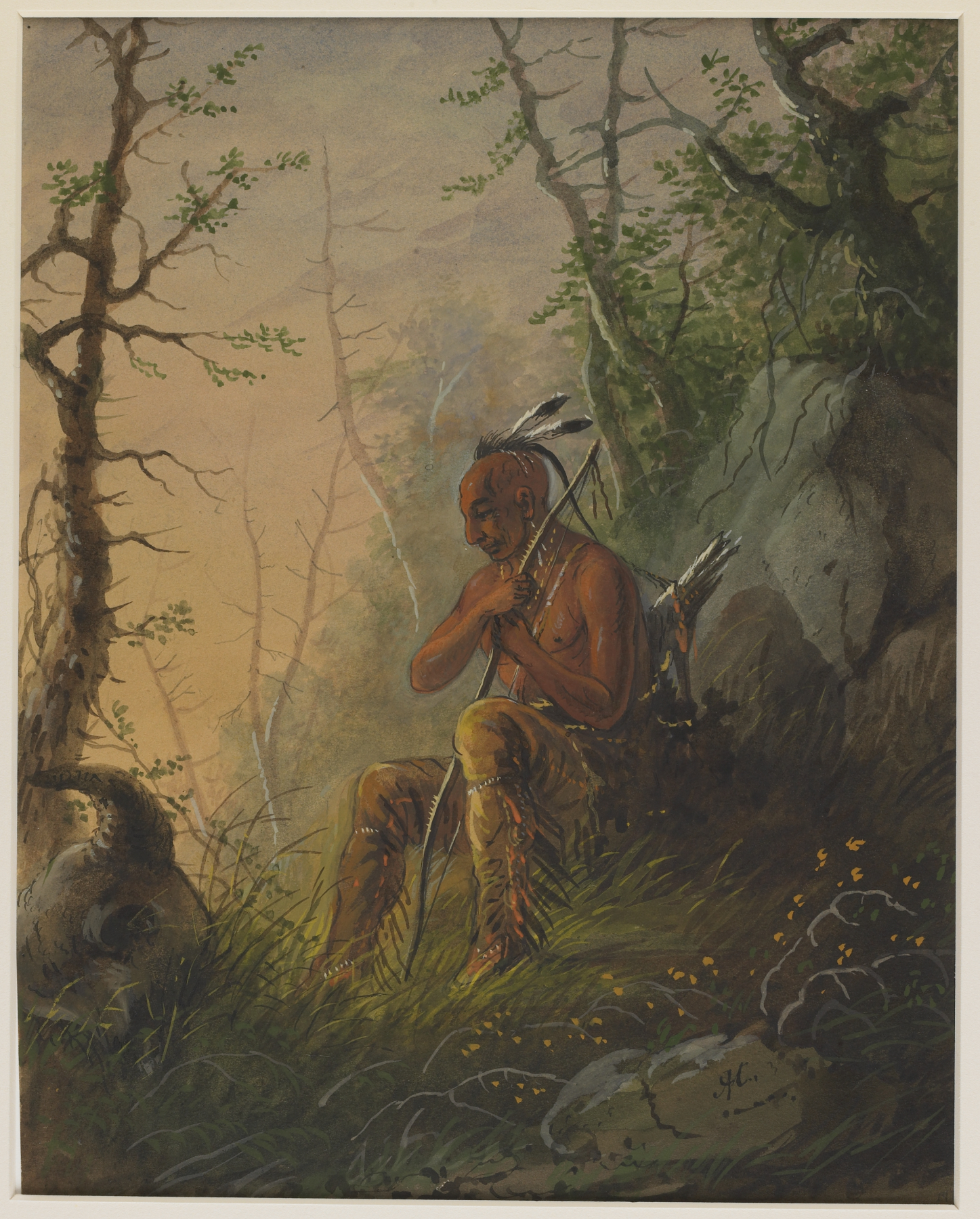Sioux Indian at a Grave
(18th and 19th Centuries )
Extracts from Alfred Jacob Miller’s original text, which accompanied his images of Native Americans, are included below for reference. These words, which shaped how Miller’s contemporaries viewed the watercolors, reveal the racism and sexism embedded in 19th-century exploration and colonization of the western part of what is today the United States.
"One of the strongest objections the Indians have made (in their removal to ther homes in the Far West) has been that of leaving the graves of their relatives and friends. It is notorious that they traverse immense districts of wilderness for the sole purpose of paying a visit to the last resting place of their dead. The modes of burial are various, each tribe differing from another. Sometimes on the death of a chief, his favorite horse is sacrificed and buried under the mound with him. Now and then the traveller encounters a solitary Lodge or two, on entering them he finds an Indian deceased, and laid out in his war dress with such arms as he would be supposed to want placed near at hand. The ordinary burial is a mound with a Buffalo skull (fit emblem of mortality) placed upon it. The Indians make their stated pilgrimages to these spots, sit down quietly, and seem to commune with the inmate. With them it is a grand mystery, and not otherwise with us;- Be assured that they cannot fathom it;- not a whit more can we. 'All that we know is,- nothing can be known.'" A.J. Miller, extracted from "The West of Alfred Jacob Miller" (1837).
In July 1858 William T. Walters commissioned 200 watercolors at twelve dollars apiece from Baltimore born artist Alfred Jacob Miller. These paintings were each accompanied by a descriptive text, and were delivered in installments over the next twenty-one months and ultimately were bound in three albums. Transcriptions of field-sketches drawn during the 1837 expedition that Miller had undertaken to the annual fur-trader's rendezvous in the Green River Valley (in what is now western Wyoming), these watercolors are a unique record of the closing years of the western fur trade.
Inscription
Provenance
Provenance (from the French provenir, 'to come from/forth') is the chronology of the ownership, custody, or location of a historical object. Learn more about provenance at the Walters.
William T. Walters, Baltimore, 1858-1860, by commission; Henry Walters, Baltimore, 1894, by inheritance; Walters Art Museum, 1931, by bequest.
Conservation
| Date | Description | Narrative |
|---|---|---|
| 2/21/1989 | Loan Consideration | examined for loan |
Geographies
USA (Place of Origin)
Measurements
10 3/8 x 8 3/16 in. (26.4 x 20.8 cm)
Credit Line
Commissioned by William T. Walters, 1858-1860
Location in Museum
Not on view
Accession Number
In libraries, galleries, museums, and archives, an accession number is a unique identifier assigned to each object in the collection.
In libraries, galleries, museums, and archives, an accession number is a unique identifier assigned to each object in the collection.
37.1940.191



